A view from China
The music installation Cave of Sounds is being exhibited in China, more than a decade after its creation, and though situated in the modern world, it speaks of an earlier technological time.
An old Portuguese lighthouse on a nearby hill reminded me I was on a Chinese island. Macau was a colony until 1999, before Portugal returned it to China. It lies to the west of Hong Kong with the two cities connected by an impressive 55 km bridge-tunnel system, the longest sea crossing and open-sea fixed link in the world. After more than twenty-four hours of travel from Spain, I arrived at the 16th floor of a hotel and entered an air-conditioned room that overlooked the old Portuguese plaza, now surrounded by modern Chinese tower blocks. Thousands of tiny lights shone in the warm, humid cityscape.
I had come to Macau to put on an installation for the 35th Macao Arts Festival. Cave of Sound is a music installation that I co-created with seven other artists more than a decade ago, in East London. Motivated more out of curiosity than ambition, its success and the extent to which it had travelled around the world had surprised me. Something about it resonated with people, and perhaps even more so as the years passed.
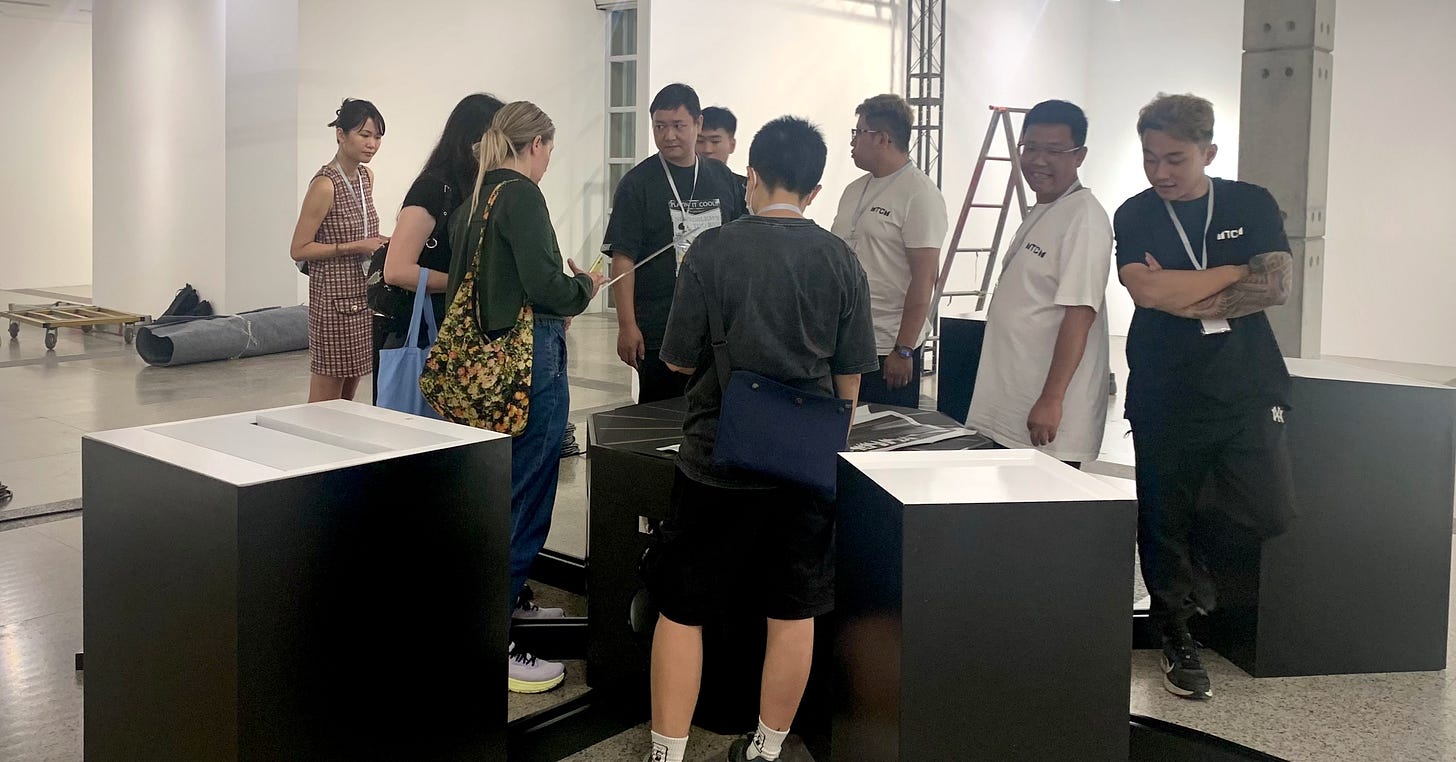
Like all artworks, it is a relic from a particular time and place: the early 2010s, a time when the internet was not so entangled in our lives, face-to-face contact was still the most prominent form of communication, and social media was just getting started. At that time, digital technology was still viewed in a broadly positive light. Artists had more space to fail without the constant monitoring and ranking. Digital culture still felt like it had the potential to be radical and liberating.
More than a decade on, I found myself in a very different time and place. I had not been part of the installation's touring for years, but seeing it installed in Macau made me reflect on all that had changed. As with revisiting an old place, memories suddenly returned. Though it was situated in the modern world, the work spoke of an earlier one, which was becoming more alive in my memory with each passing day.
In the early 2010s, in Hoxton, East London, I would regularly meet with a loose collective called Music Hackspace. Either in a room on a grimy industrial estate or the basement of a cafe, we gathered to discuss ideas and share our projects. The events were organised by the French academic and entrepreneur, Jean-Baptiste Thiebaut, who dressed and spoke more professionally than the rest of us, providing more credibility to the group. The nights ended with free pizza, beer, and conversations with some of London’s best music tech minds.
With no permanent base or running costs, the group’s activities were freed from the narrow motivations of profit or the bureaucracies of universities. It was an authentic space for freethinking and countercultural activities. Social media was still marginal and London’s rents had not yet skyrocketed, so people had enough time and money to turn up regularly to share and learn with one another. I was a trained musician who had played jazz drums professionally and classical piano privately, but felt my technological skills lacked depth. Learning through osmosis in a decentralised setting suited me.
The music hacker philosophy had nothing to do with breaking into computers or deviancy. It simply treated technology as something malleable that could be played with and transformed for new purposes. From this perspective, technology was not simply something that happened to us or a consumer product, but something that could be shaped by ordinary people. Rather than accepting things for what they were, one could reimagine and rebuild them.
‘(Music Hackspace) felt like the underground. The best music tech minds in London. A bit of a fringe thing, slightly anarchist and non-mainstream.’
Arthur Carabott, Music Interaction Designer.
An opportunity arrived one day when artist, academic, and technologist Tim Murray-Browne was appointed Music Hackspace’s composer-in-residence, with a small grant from Sound and Music. Tall, shy, intelligent, and with a bassy voice, Tim used his introductory talk to present an idea that was in keeping with the group’s counter-cultural spirit: he would propose no idea, except to allow for a concept to naturally emerge from the group. Over the following year, eight of us conceived of and built an interactive music installation which we called Cave of Sounds. It was imagined, designed, and created in a largely non-hierarchical manner, with consensus reached through extended discussions.
The young group was comprised of eight members originating from five European countries: England, Spain, Poland, France, and Greece. Conversations were broad and lively. I remembered having discussions with Tim where he described the influence Herner Werzog’s documentary The Cave of Forgotten Dreams had on him, as well as Christopher Small’s book Musiking. I spoke with him about how my thinking had been influenced by Jacques Attali’s book Noise: The Political Economy of Music. In retrospect, what emerged was a mix of all these ideas.
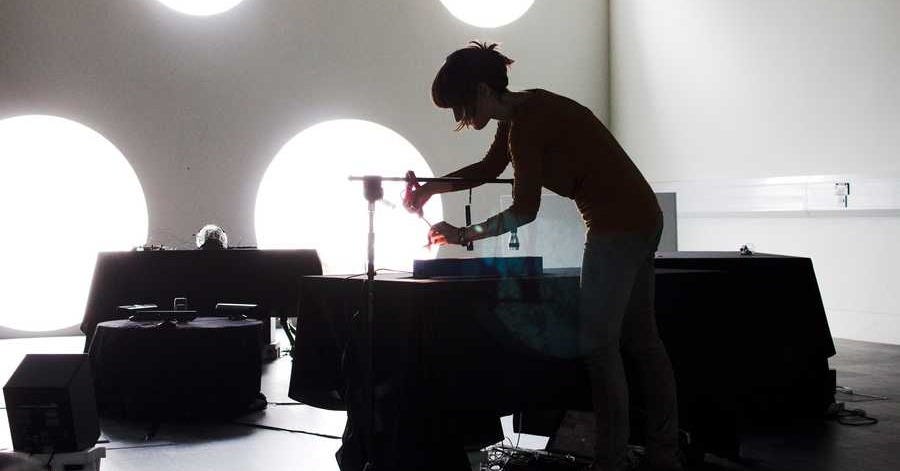
To create the installation, each of us built one of eight bespoke musical instruments that could be played by the body through movement, light, shadow or touch. The instruments were arranged in an inward-facing circle, an egalitarian shape that placed everyone at an equal distance from its centre. The idea was that anybody, irrespective of musical training, could play the instruments and experience a sense of musical communion ordinarily reserved only for musicians.
Initially, the instruments did not naturally meld together, so we created a centralised computer that kept all the music in the same key and beat. Similarly, our first consideration was sound, but in the years that followed, a light system was developed by a design team that helped illuminate the connections between participants. The goal was to dissolve the line between performers and audiences.
We were influenced by the elemental idea of making instruments from our surrounding materials. Approximately 50,000 years ago, neanderthals used animal bone to create flute-like instruments. In the same spirit, we built instruments from the surrounding materials of our high-tech civilisation. Although societies and materials have changed, the fundamental desire to enter into communion through sound is ancient, and I suspect it is this desire that caused the installation to win an award and travel around the world. While each culture approaches and interacts with the installation uniquely, I believe they are all expressing and satisfying the same desires.
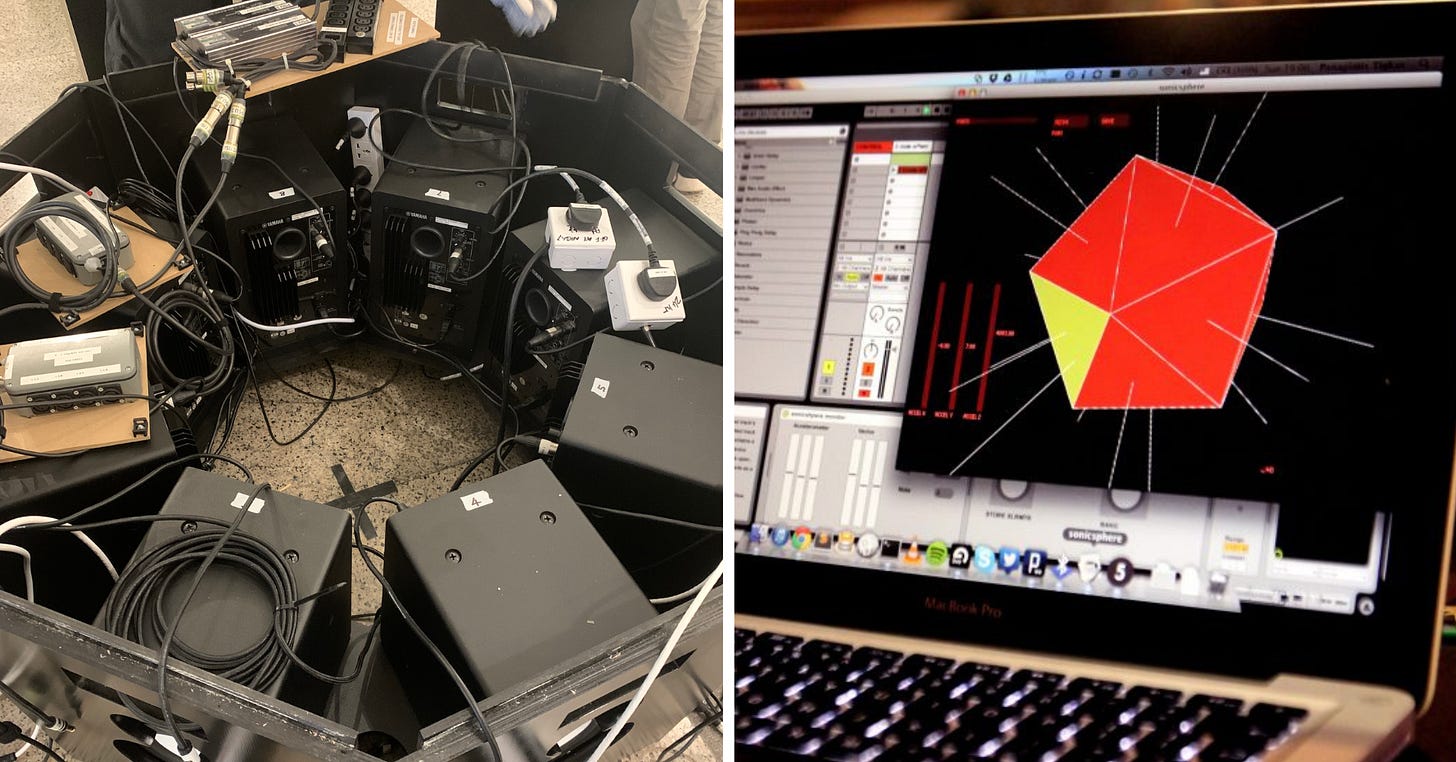
Watching people in Macau interact with the installation was at once familiar and new. There were commonalities, but differences too. When I asked participants about their experiences, they generally described it in more subjective terms: ‘it made me feel calm’; ‘I felt like I was in the middle of a mountain’; ‘I felt that I was merging with the installation’.
The comments in Europe tended to have a different focus. In England, there was a greater tendency to attempt to understand the work conceptually, technically, and correctly. When discussing cultural differences with people in Macau, they commented that ‘people in China feel more optimistic about technology than Westerners. We do not have the same sense of pessimism that is felt in the West.’
I found this comment thought-provoking, as while I recognised that the West’s pessimism about technology could at times seem to offer little vision for the future, I did not share a great sense of optimism either. Like many people, I find that today’s digital technology feels rigid, imposed, and laced with trickery and surveillance. Many feel they cannot comprehend how modern technology is built, and even if they did, they would be powerless to change it due to its financial backing.
Since the installation was built, society’s idolisation of digital technology has only increased. The addiction to smartphones, the misplaced faith in blockchain technologies, and the belief in the intelligence — and even sentience — of AI chatbots has coincided with a steadily dehumanising culture. When the line between humans and machines becomes blurred, it is easier to treat humans like machines and machines like humans.
While reflecting on these ideas, I noticed a detail in our installation that I had previously overlooked: It had no screens; not a single pixel, and at no point did anyone suggest using any. Yet it is through pixels that we generally interact with modern digital technologies. Bodily movements are minimised and streamlined with the goal of a kind of cerebral melding with a computer, driven in part by the attention economy. In this conception, the body is redundant and inconvenient.
Interacting with Cave of Sounds involved people moving their bodies, shifting their gaze, and looking at others, with neither glass nor digital avatar filtering that experience. This design choice was not motivated by a sense of resistance; it was not even remarked upon at the time, but simply felt natural. The body was, back then, more part of the digital experience, and while I have no intention to return to the past, I feel a certain grief for the future that never was, and a desire to rekindle its spirit.
As I left Macau, the installation remained in the competent hands of the festival’s staff. In the coming month, people will interact with each other out of our sight. We can fix the installation remotely if anything malfunctions, but nothing will be recorded, and no digital mind will be learning. Once the festival ends, the installation will be carefully packed away in meticulously labelled bags and shipped back to a cold, wet island in Europe’s North Sea. All that will remain will be the human interactions, the feelings and memories, and the momentary connections formed in communion with others. All that will remain, will be human.


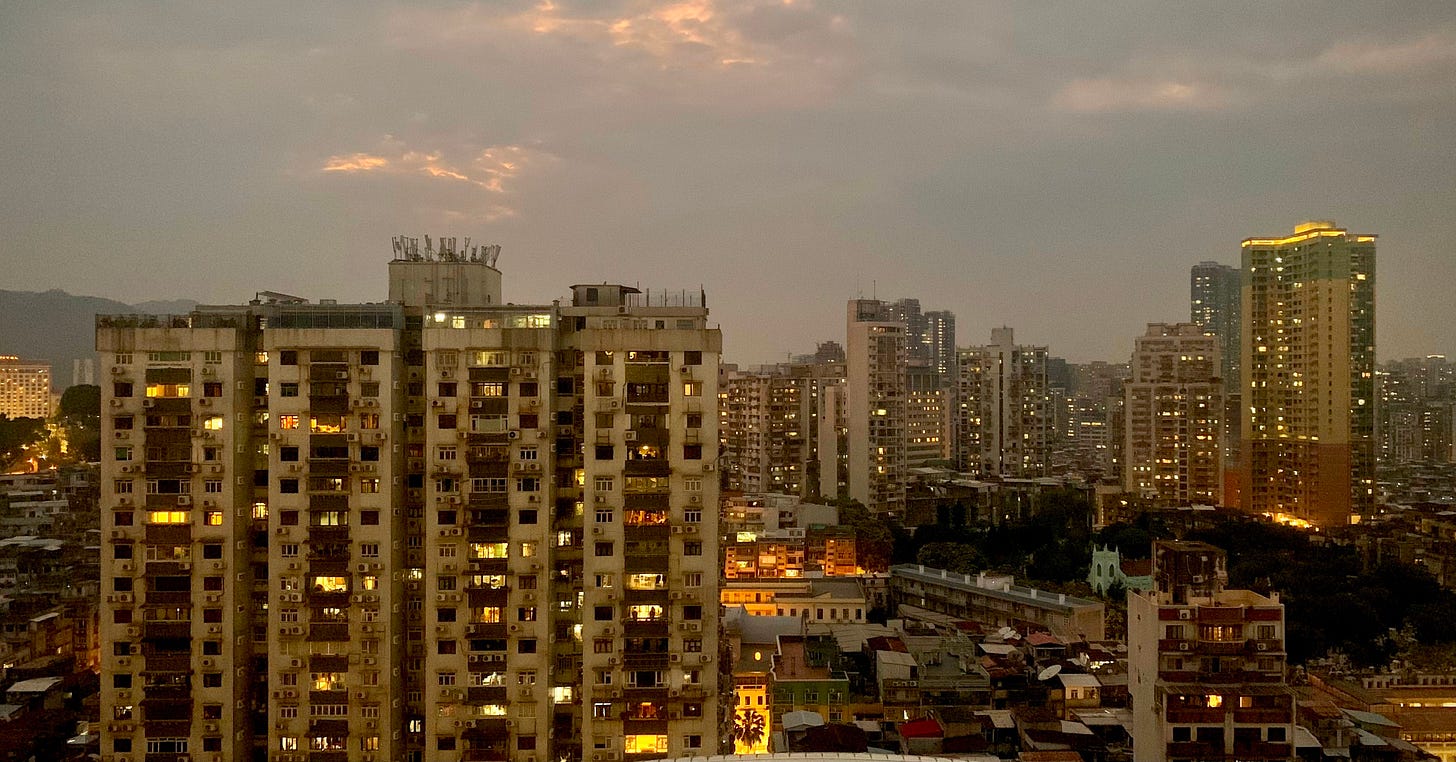
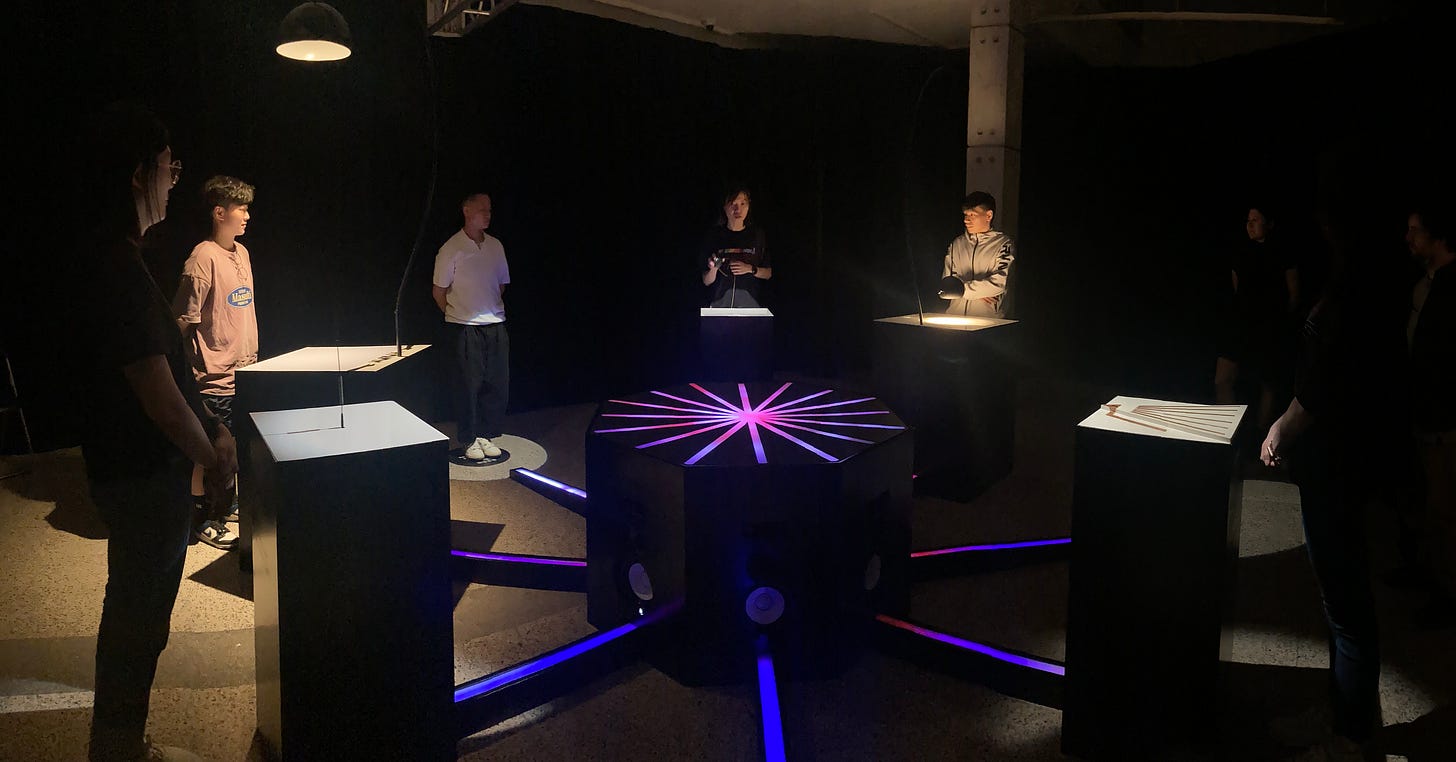
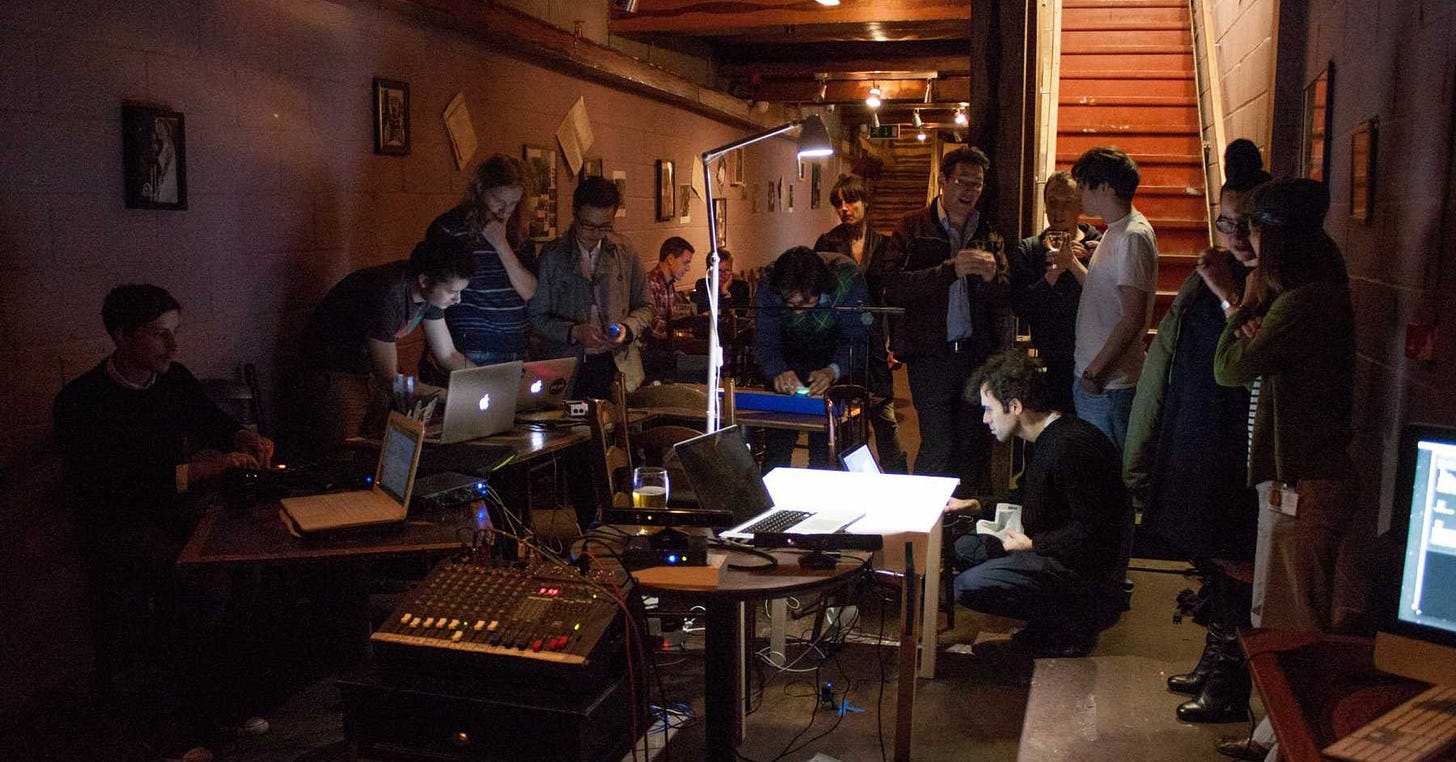



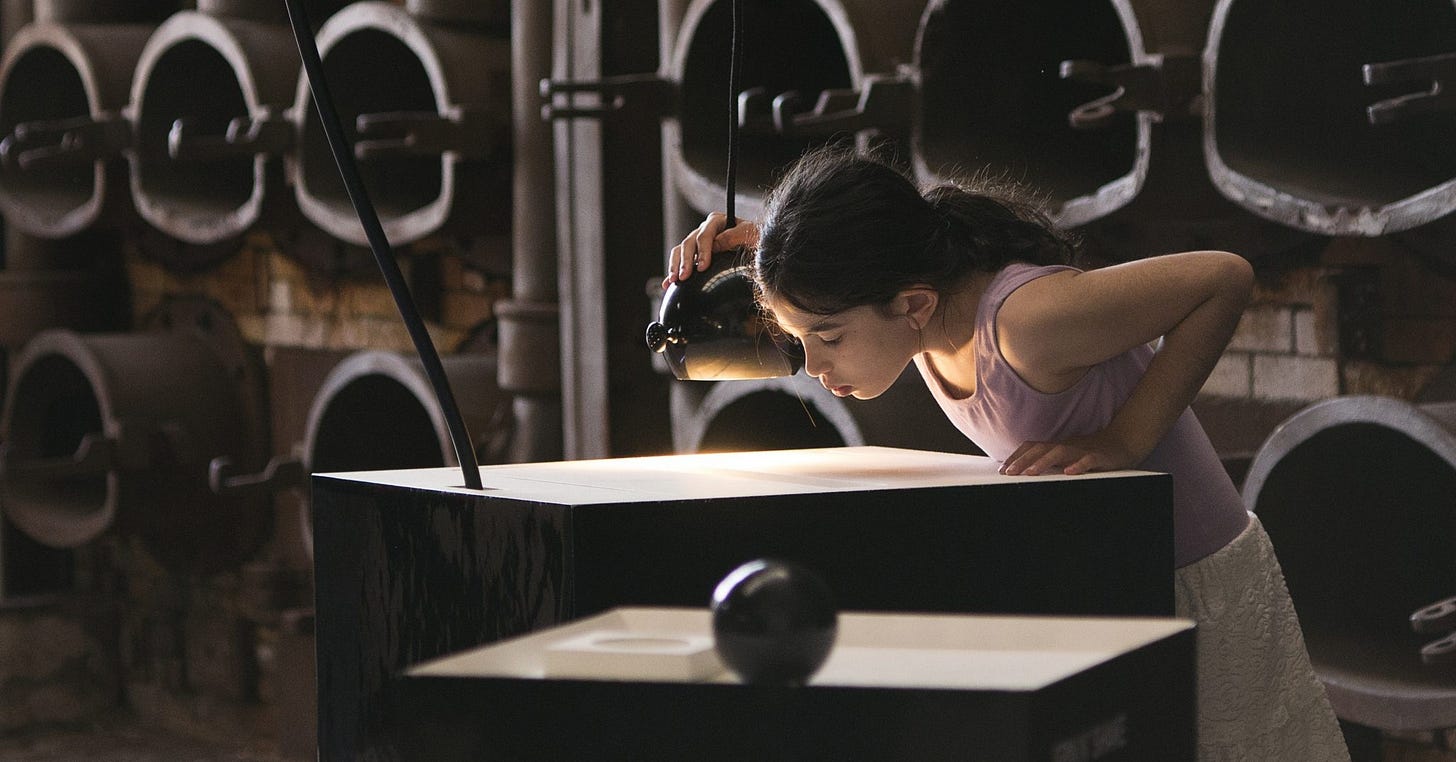
Thanks for giving us more background on this installation Dom! It is appropriate but also ironic that no digital archive of the installation is made. To me this is the proper way for artists to use technology; humans conceive and create, machines are the tools to make the project come to fruition. Lovely.
Being into art that involves technology means it gets harder and harder to get away from a screen and spend more time in the real world. Always on the lookout for destination installations like Cave of Sounds. Thanks for this great piece.